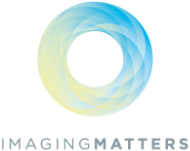THE IMAGING MATTERS VISION FOR COMMUNITY DIAGNOSTIC CENTRES ALIGNS WITH PROFESSOR SIR MIKE RICHARDS’ REPORT –
DIAGNOSTICS: RECOVERY AND RENEWAL OCTOBER 2020
IMAGING MATTERS’ INTERPRETATION OF THE RICHARDS REPORT:
A transformation in elective diagnostic care »
This is not about adding odd modalities to existing sites but is about developing a new model of healthcare, with adaptability to grow with demographic and technological advances.
A key bridge between primary and secondary care »
This is a new delivery care model, a service between primary and secondary care, and patient pathways, digital solutions and referrals need a new paradigm.
A change of 60-90% of existing elective diagnostic pathways »
Moving as much elective diagnostic activity as is safely possible away from acute hospitals will strengthen their ability to deliver efficient inpatient and emergency access, and allow community diagnostic centres to streamline pathways to maximise throughput and value.
A digital revolution leading innovation »
Wrapping the community diagnostic centres in appropriate technology, on an open IT platform, will drive a more efficient patient throughput, provide a better patient experience, and allow staff to deal more effectively with patients.
Efficient use of staff – in a productive environment »
We have studied workflow and throughput, primarily but not exclusively in imaging, for many years. Our experience tells us that grouping modalities together:
● achieves economies of scale for those shortage professions
● maximises productivity
● our belief is whilst mobile imaging facilities provide an excellent temporary solution particularly in hard to access areas, that the recent proliferation of mobile facilities on key hospital sites stretches an already overstretched staff resulting in a less productive service.

IMAGING MATTERS’ DELIVERY VISION:
Flexibility and adaptability »
A community diagnostic centre needs to be able to deal with future growth, both demographic growth and where technological advances provide increased demand for elective diagnostic services.
Staff centric »
Staffing is an issue currently, compounded by the proliferation of more diagnostic facilities. Recruitment and retention of staff will be critical and our design will ensure staff welfare, staff training, and staff clinical environments satisfy their needs.
Patient friendly »
Our community diagnostic environment will be planned with the patient experience in mind. From entering and checking in, through waiting to treatment discharge and follow up, we will maximise the beneficial use of technology, positive distractions and a physical environment that will resemble hospitality rather than hospital.
Clinical options »
We have three different options for clinical management
● the NHS can manage the facility from day one
● the independent sector can manage the facility for a period, given the current huge NHS agenda, and then transition to NHS management
● the independent sector can manage the facility for the longer term
Sustainable »
We will strive for net zero carbon in our solutions alongside BREEAM excellent. Our vision is to have a “living and breathing building, supported by innovation in building methods, and a design process that will focus on sustainability.”
